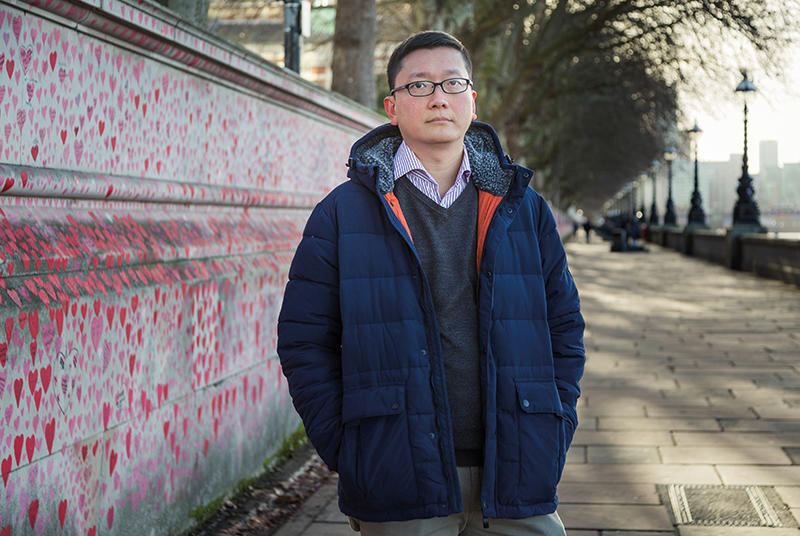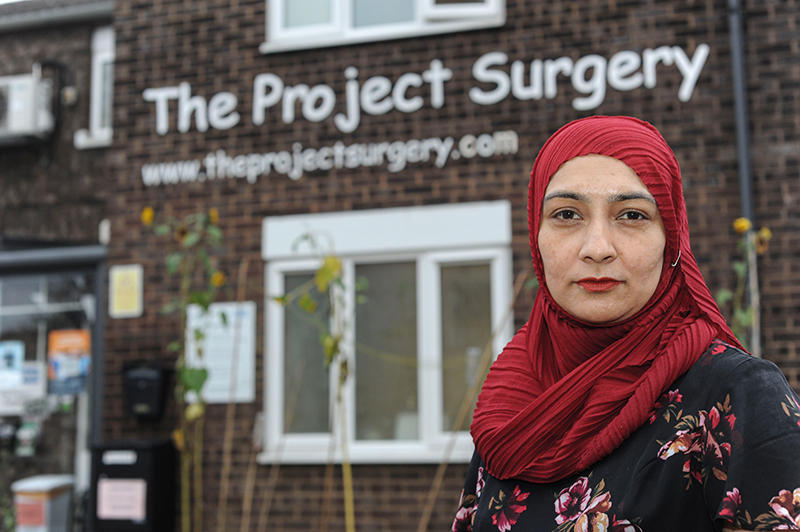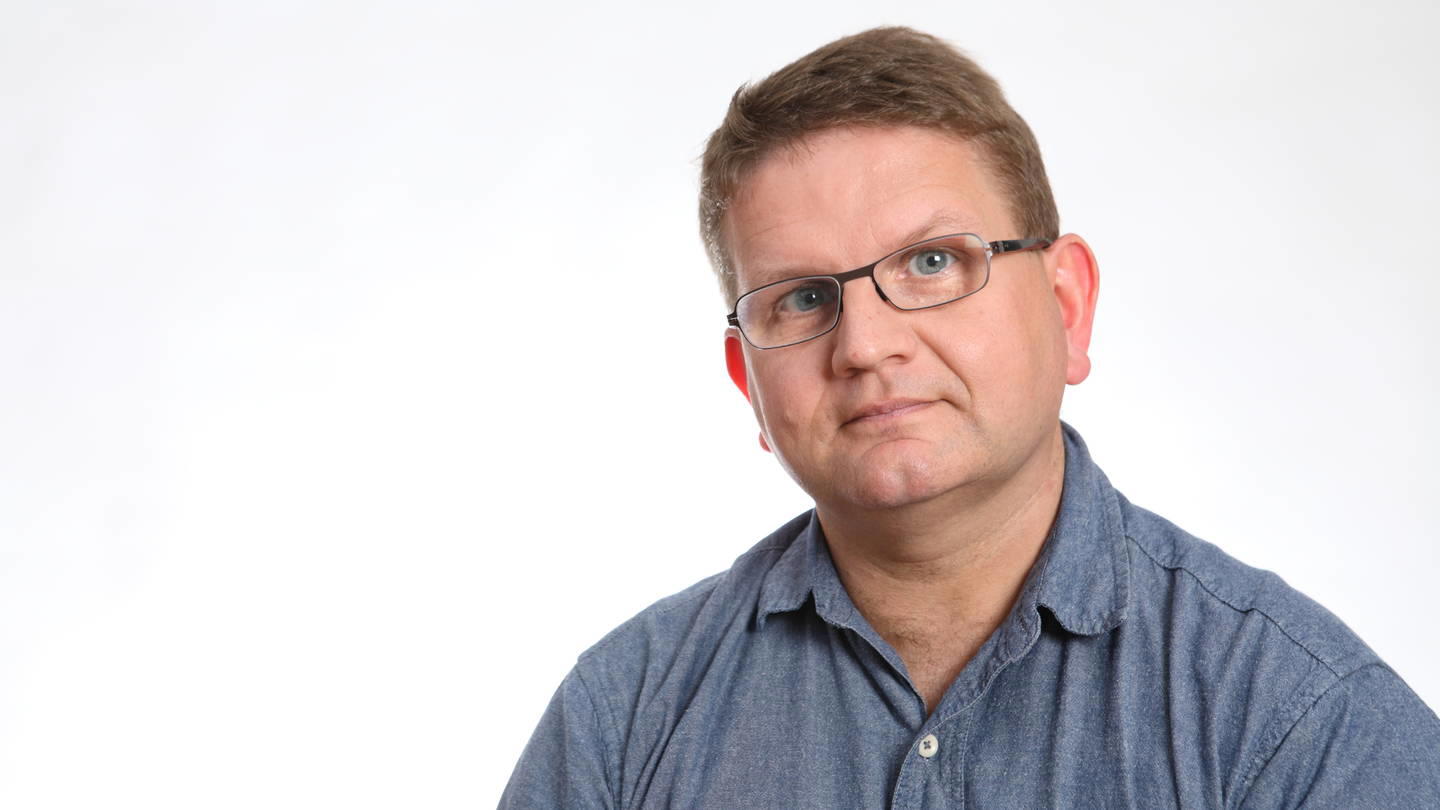‘We are asking a lot more of [the NHS] now as we need to hugely step up our vaccination effort and I do believe they up are to the task.’
This was how health secretary Sajid Javid assessed the then imminent commencement of the COVID vaccine booster programme in response to the growing spread of the Omicron variant of the virus on 1 December last year. Coming at a time when the health service was entering what has traditionally been regarded as its ‘winter pressures’ period, Mr Javid’s acknowledgement that ministers were ‘asking a lot’ may perhaps have been a late contender for understatement of 2021.
Approximately two weeks after the health secretary’s announcement on the BBC’s Today programme, consultant anaesthetist Danny Wong arrived for work at London’s St Thomas’ Hospital to be greeted by the sight of a queue of hundreds seeking booster jabs stretching as far as he could see.
From Dr Wong’s perspective, however, the booster campaign – which aimed to provide third immunisations to every eligible adult in the UK before the end of 2021 – was not simply the latest vagary of the pandemic, but part of a much wider and long-running source of malaise within the NHS, the chronic shortage of staff.
Fuelled by unsustainable working conditions and punitive approaches to pay and pensions, Dr Wong warned that the recruitment and retention crisis could soon mean that the very concept of ‘seasonal pressures’ during winter could soon become utterly redundant.
‘I’ve never seen morale as low,’ says Dr Wong. ‘It’s been quite upsetting to see a lot of trainees I’ve spoken to feeling very exhausted and even the consultants are feeling very tired and despondent, and I don’t know what immediate solutions there are on offer.
‘It’s hard to imagine that things could be worse, but I can’t see it getting much better if they [the Government] don’t roll out strong measures to increase recruitment and retention.’
A lot of trainees I’ve spoken to feel very exhaustedDr Wong
Speaking to The Doctor last month, Dr Wong explained how his trust was already grappling with increased emergency department admissions, delays in discharges and a rise in the cancellation of scheduled elective surgeries.
‘At the moment the mood is very sombre, people are anxious,’ says Dr Wong.
 WONG: Never seen morale so low (picture credit: emma brown)
WONG: Never seen morale so low (picture credit: emma brown)
‘Whilst we don’t know what it [Omicron] will be like we have a sense of impending doom in a way and we are not sure that the steps the Government is taking will stem the increase.
‘We do have the added protections of vaccines, but the people coming through to A&Es with respiratory failure are unvaccinated, and that has a knock-on effect on services in as a whole.
‘We are expecting that if the cases [of Omicron] in the in the community goes to such an extent as to be way higher than previous waves, even if it was a milder form of the illness, the overall absolute number of people coming through our doors will probably still be very, very high.’
‘Winter pressures back in August’
Even before the emergence of the Omicron variant, mounting pressures on services and a growing sense of disillusionment among healthcare staff were being reported.
The findings of a survey of more than 2,000 doctors conducted by the BMA in November 2021 made for sobering and alarming reading as to the pressure across all parts of the health service.
Seventy-eight per cent of all doctors responding to the survey said that they were ‘not very confident’ or ‘not confident at all’ about their department or practice’s ability to manage patient demand during the approaching winter.
Meanwhile 85 per cent of GPs and 76 per cent of doctors working in secondary care expressed they were either extremely or quite anxious at the prospect of what the winter period would bring.
We’re not meeting our demand and I don’t know any practice that isDr Hussain
Based in the London borough of Newham, GP Farzana Hussain says that, while she is concerned about the potential impact of Omicron, she and her colleagues had been contending with levels of patient demand normally associated with winter months from as far back as the summer.
She says her practice had had to respond to an influx of patients with respiratory infections and stomach bugs typically seen during colder months, but which took off once lockdown conditions were eased, as well as a ‘tsunami’ of demand relating to mental health.
‘Back in August we were already facing “winter pressures”,’ says Dr Hussain.
‘Now we are beyond a level of pressure that I have ever seen in 20 years as a GP.’ With Newham suffering one of the highest COVID death rates during the first wave of the pandemic, Dr Hussain says the borough still has a low vaccine coverage rate.
The Newham figures up to 5 January show 68 per cent of the eligible population have had their first dose of the vaccine, compared with more than 90 per cent of the UK population as a whole.
 HUSSAIN: ‘We are beyond a level of pressure that I have ever seen in 20 years as a GP’ (picture credit: Simon Bolton)
HUSSAIN: ‘We are beyond a level of pressure that I have ever seen in 20 years as a GP’ (picture credit: Simon Bolton)
With the arrival of winter, Dr Hussain says her practice is now facing an unprecedented amount of patient need coupled with the drive to administer COVID booster vaccinations, with Dr Hussain concerned about what effect this would have on already overstretched primary care services.
‘When the COVID booster roll-out was announced I had very mixed feelings,’ she says. ‘I was proud to be a GP because I know primary care was chosen again because we successfully delivered over 75 per cent of the vaccinations during the first roll-out.
‘I was, however, also scared because we do have finite resources and my team is very tired, they’ve not taken annual leave for two years. We are expecting an awful lot of our NHS staff and I do feel that something will give, so I am very scared for the winter ahead.
‘I understand why we would be chosen to do the COVID booster campaign, but in doing so we end up displacing another piece of our work and I am not sure there is a huge [public] understanding of that at the moment. ‘We’re not meeting our demand and I don’t know any practice that is,’ she adds. ‘It is not a nice place to be, but I know that all my doctors are working at full capacity.’
More work, fewer doctors
Working at the absolute limits of staff capabilities and still being unable to meet demand has become a depressing commonality across virtually the entire health service and becomes all the more alarming when examining NHS performance figures.
Staffing data for general practice released by NHS England reveals that the number of full-time equivalent GPs working in England fell by 157 between 30 September and 31 October 2021, with the BMA warning that the health service had lost the equivalent of 1,744 full-time, fully qualified GPs since 2015.
The picture is no better for secondary care with major emergency departments in England experiencing a total of 1,336,551 admissions during November last year, compared with 1,036,350 in the same period in 2020.
The number of attendances to emergency departments lasting more than four hours from arrival to admission, transfer or discharge more than doubled from 210,250 in November 2020 to 445,794 in November last year.
Six million waiting
The disruption of the pandemic and long-standing shortages of staff have led to a titanic backlog of unmet care.
Data for referral-to-treatment waiting times for consultant-led elective procedures in England show a staggering six million patients were waiting to begin treatment by the end of October last year, with 312,665 of these patients having already waited more than 52 weeks.
Cancer waiting times have also deteriorated with the rate at which GP urgent referrals to first consultant appointments within two weeks falling from 91 per cent in October 2019 to 88 per cent in October 2020 and just 81 per cent in October last year.
These service pressures, however, are not confined simply to England but exist to varying extents across all of the UK’s devolved health services.
There has been an unprecedented wait for essential but routine surgeriesSAS doctor
BMA Scotland council chair and consultant geriatrician Lewis Morrison says that while the situation in Scotland’s health service is often viewed as ‘less awful’ than that of England, many of the same challenges exist north of the border.
‘In the context of what’s going on generally in Scotland right now, winter seemed to start in about the third week of July,’ says Dr Morrison. ‘We [the NHS] came into this pandemic with a knackered, understaffed workforce. Here we are 21 months later and it’s actually a miracle that it’s as functional as it is, and that more people haven’t either just left or gone off on long-term sick because of the pressures that they’re under.’
 MORRISON: It’s a miracle the NHS is as functional as it is
MORRISON: It’s a miracle the NHS is as functional as it is
In the BMA’s November viewpoint survey, 75 per cent of doctors who responded said that their ability to discharge patients to adult social care settings had become more difficult over the previous year.
Working in geriatric care, Dr Morrison says he recognised this situation all too readily, adding that he and his colleagues often found themselves in the position of struggling discharge patients back to their care homes owing to COVID requirements and gaps in services.
He explains that, while the pandemic has resulted in many care homes becoming more cautious about sending one of their residents to hospital, once an older patient was admitted the process for returning them to a social care setting could vary hugely.
‘I think the efficiency with which we turn that around is probably better now,’ explains Dr Morrison. ‘We did have a situation a few months ago, where some care homes would take people back within a day or so, and others it was taking us four or five days [and] that has a cumulative system-wide effect.’
‘Fantasy’ waiting times
Another significant source of concern for Dr Morrison was the level to which governments were being honest and transparent with the public over the extent of the NHS backlog and system pressures, adding that such an approach risked damaging the relationship between doctors and their patients.
‘We still have waiting-time guarantees in Scotland, which are a fiction right now,’ he adds. ‘We can send you a letter saying you’re on a waiting list, but the idea that you’ll be seen and treated within 18 weeks for many conditions is fantasy, and yet we have a system which still fuels patient expectation.’
Along with delayed discharges, fears around delayed admission to hospitals is a growing concern for doctors in primary and secondary care with 85 per cent of GPs and 78 per cent of hospital doctors telling the BMA’s viewpoint survey that they were more concerned than they were a year ago.
A northwest-based obstetrics and gynaecology staff and associate specialist doctor who does not wish to be named says delays in accessing treatment have gradually become all too commonplace but worsened after COVID.
She says that, while obs and gynae and other surgical specialties did not necessarily experience winter pressures in the same way as departments such as emergency care, the pressure was felt differently.
This is a workforce that has been dealing with this crisis for two years so people are really burnt outDr Simons
Citing the example, she says even a couple of years ago, strict measures were taken in all emergency departments to avoid waiting times beyond four hours, and any such prolonged wait was considered a breach of the standard protocol.
‘Whereas now, waiting times beyond four hours is not uncommon at all – emergency department waiting times have gone through the roof,’ she says.
‘There has been an overnight wait of around 12 hours and there has been ridiculous waits for ambulance services, sometimes an 18-hour wait for the transfer of patients between hospitals.
‘Emergency department patients, if needed to be transferred to different sites, are also being offered the choice of using personal transport (if well enough and not unsafe) rather than wait for ambulances.
‘Since COVID, patients – after being referred from primary services – are waiting sometimes up to one year before being seen in specialist clinics. There has been an unprecedented wait for essential but routine surgeries. ‘I recently saw two patients who were booked last year to have surgery but are still waiting for a date,’ she says.
‘Patients are thus attending emergency departments directly to seek advice with the hope of having their treatment expedited, and this is causing more pressure on emergency services.
‘It is becoming indispensable to counsel patients adequately and appropriately while they are being booked for any procedures (be it gynaecological surgery or maternity). Patients may have to be prioritised as per emergency, and hence there could be an unexpected wait as outpatient or inpatient.
This is sometimes very frustrating for the patient and for the staff. ‘Sickness, long-term sickness, burnout, staff moving jobs or going part-time, are all contributing to reduced staff and this then creates pressure in areas where one-to-one care is required (eg, the delivery ward) or where quick turnaround is required (enhanced recovery/post-operative wards).
‘Work pressure also affects planned career development goals for doctors at all levels but maybe more for the doctors who are not in training. Job plans are changed to facilitate service but this then affects the career progression; eg, through certificate of eligibility for specialist registration for the SAS doctors,’ she says. ‘Some modification in the process of employment of staff, recruitment and GMC registration might help in mitigating the staff crisis during times of pressure.’
Weaknesses exposed
The perfect storm of chronic understaffing, plummeting morale and lack of capacity across virtually all sectors of the health service, is something Yorkshire-based foundation year 2 Julia Simons also witnesses on a daily basis.
 SIMONS: Training opportunities being taken away
SIMONS: Training opportunities being taken away
Dr Simons, who only recently returned to work after contracting COVID on 7 January, says the annual demands on the health service during the winter, coupled with the pandemic, had resulted in unsustainable pressure on the NHS.
‘Winter pressures year on year has been an unsustainable pressure [and] I think that’s massively exacerbated by the limited social care provision and the bed blocking that creates,’ says Dr Simons.
‘Where I’ve been working [we are] continually fighting for beds to the extent where it becomes a whole person’s job just to try and find beds, which is obviously not a great use of a qualified nurse’s time.
‘A lot of the beds are then occupied by people who are medically fit for discharge, but there’s nowhere to discharge them to because there aren’t the intermediate care beds in the community for them to go to.
‘So on top of having all of the new admissions [of] people who have COVID, you also then can’t get people who don’t have COVID out of hospital because there are no care services available to provide for them.’
This is the chickens coming home to roost after years of failing to address recruitment and retention issuesDr Morrison
Dr Simons says that, while her own trust was managing the challenges posed by Omicron and seasonal illnesses, she knew of other trusts in her region that have had to cancel all non-urgent outpatient activity till the end of January, to cope with demand.
As well as the effects on patients, she warned the high-pressure, working environments junior doctors have been working in for almost two years had left staff exhausted and often unable to take annual leave.
She adds that doctors in training are seeing this difficult situation being further exacerbated by missed opportunities for training, something she believes could ultimately stunt the professional development of an entire generation of doctors.
‘We’re now two years into a pandemic and [if we] continue taking away training opportunities from junior doctors, it is only going to result in them not being trained in the way they should be to be able to complete their future jobs,’ warns Dr Simons.
‘The other issue that is recurring, and I think really demoralising to junior doctors, is that their leave requests are being rejected on the basis of the staffing crisis. ‘This is a workforce that has been dealing with this crisis for two years so people are really burnt out, and they desperately need that leave for their own well-being.’
Uncertain outlook
With many months of winter still ahead, it is impossible to know exactly how the pandemic and the gigantic backlog in unmet care it helped to generate would unfold across an exhausted and understaffed health service workforce.
For Dr Morrison, however, the debate should no longer be about seasonal pressures putting the NHS under strain, but an acknowledgement from those in power that the crisis is one that was years in the making.
‘This isn’t winter and it’s not COVID. This is the chickens coming home to roost of years and years and years of failing to address recruitment and retention issues in healthcare,’ he says.
‘The warning signs about the degree of fatigue and burnout amongst the medical profession are pretty loud and clear [and] running both health and social care so close to the wire before a pandemic means that the whole system is effectively creaking if not already broken.’

